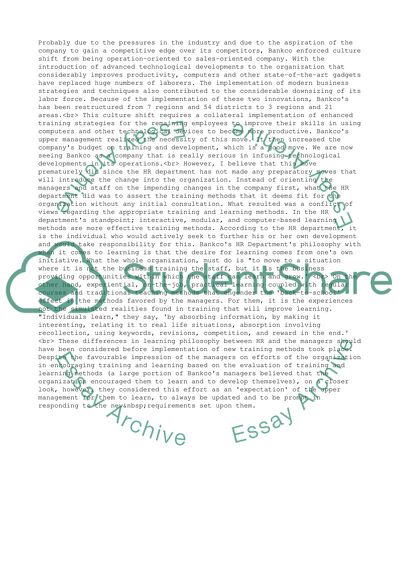Cite this document
(Challenges in Transforming Bankco into a Learning Company Case Study, n.d.)
Challenges in Transforming Bankco into a Learning Company Case Study. Retrieved from https://studentshare.org/management/1508783-hnd-managing-people
Challenges in Transforming Bankco into a Learning Company Case Study. Retrieved from https://studentshare.org/management/1508783-hnd-managing-people
(Challenges in Transforming Bankco into a Learning Company Case Study)
Challenges in Transforming Bankco into a Learning Company Case Study. https://studentshare.org/management/1508783-hnd-managing-people.
Challenges in Transforming Bankco into a Learning Company Case Study. https://studentshare.org/management/1508783-hnd-managing-people.
“Challenges in Transforming Bankco into a Learning Company Case Study”, n.d. https://studentshare.org/management/1508783-hnd-managing-people.


